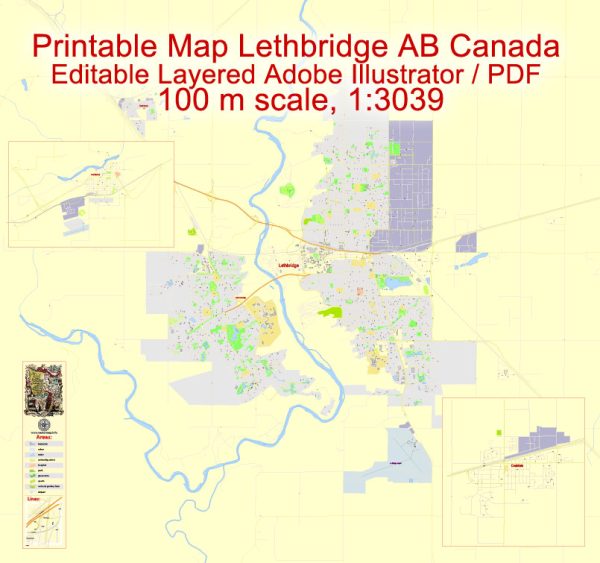Lethbridge, Coaldale, and Fort Macleod are three communities in Alberta, Canada, each with its own unique history of urban development.
- Lethbridge:
- Early Settlement: Lethbridge’s history dates back to the late 19th century when the area was primarily inhabited by Indigenous peoples. The arrival of the North Western Coal and Navigation Company in 1885 marked the beginning of significant settlement and economic activity.
- Economic Growth: Lethbridge developed as a coal-mining and agriculture hub. The construction of the High Level Bridge in 1909, one of the longest and highest steel trestle bridges in the world, facilitated transportation and further spurred economic growth.
- Diversification: Over the years, Lethbridge diversified its economy, with agriculture, education, and healthcare playing key roles. The city has continued to grow, incorporating modern amenities while preserving its historical character.
- Coaldale:
- Coal Mining Roots: Coaldale’s history is closely tied to coal mining, similar to Lethbridge. The area attracted settlers due to the presence of coal mines, providing fuel for the growing region.
- Agricultural Transition: As coal mining declined, Coaldale shifted its focus to agriculture. Irrigation from the nearby Oldman River transformed the landscape, making it conducive to farming.
- Small-Town Character: Coaldale maintains a small-town character, with a mix of residential and agricultural areas. The community has evolved as a peaceful and family-oriented town.
- Fort Macleod:
- North-West Mounted Police (NWMP) Fort: Fort Macleod has a rich history as one of the first locations settled by the NWMP in the late 19th century. The NWMP was established to maintain law and order in the Canadian West.
- Ranching and Trading Hub: The fort played a crucial role in the development of ranching and the fur trade. As settlers and traders moved into the region, Fort Macleod became a significant center for economic activities.
- Heritage Preservation: Today, Fort Macleod is known for its well-preserved heritage buildings, including those from the NWMP era. The town celebrates its history through events and maintains a charming atmosphere that reflects its historical roots.
Overall, these communities in southern Alberta have experienced a transformation from their early days as resource-driven centers to diverse and thriving municipalities, each contributing uniquely to the cultural and economic landscape of the region.


 Author: Kirill Shrayber, Ph.D.
Author: Kirill Shrayber, Ph.D.